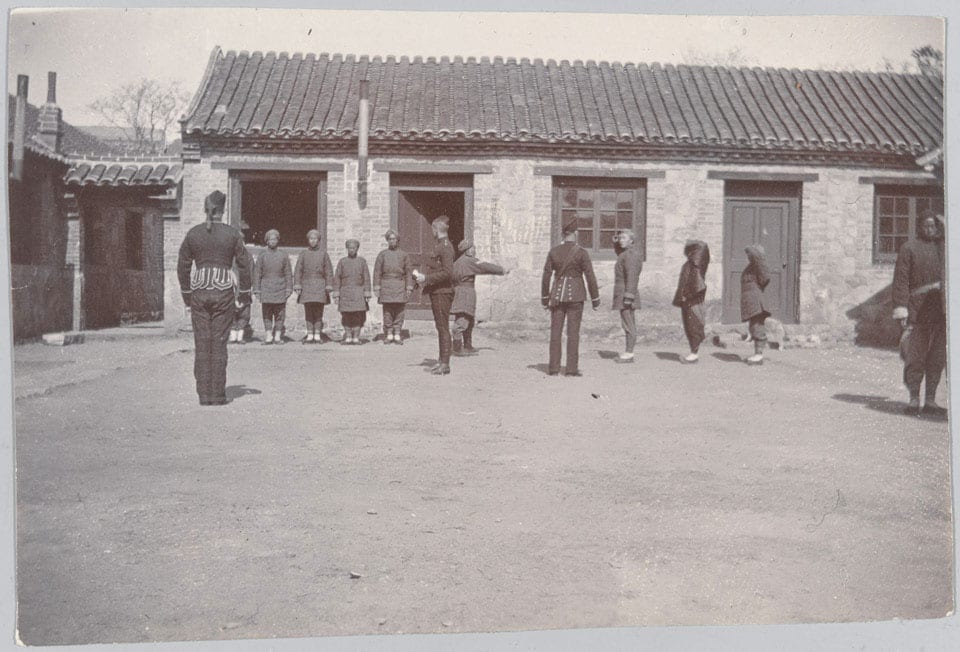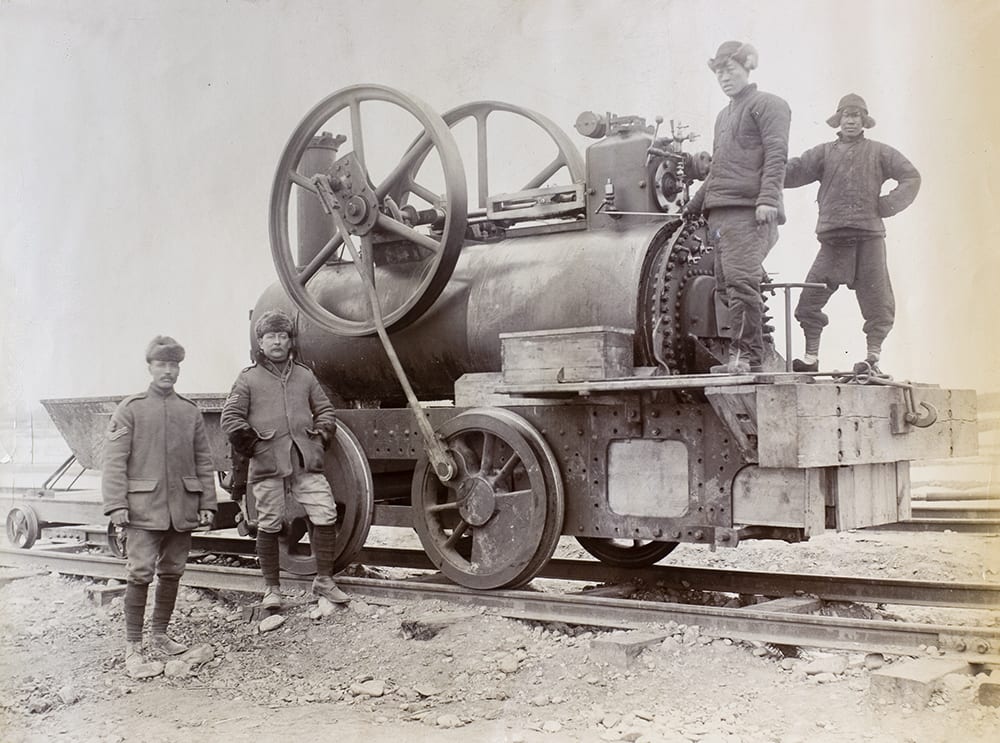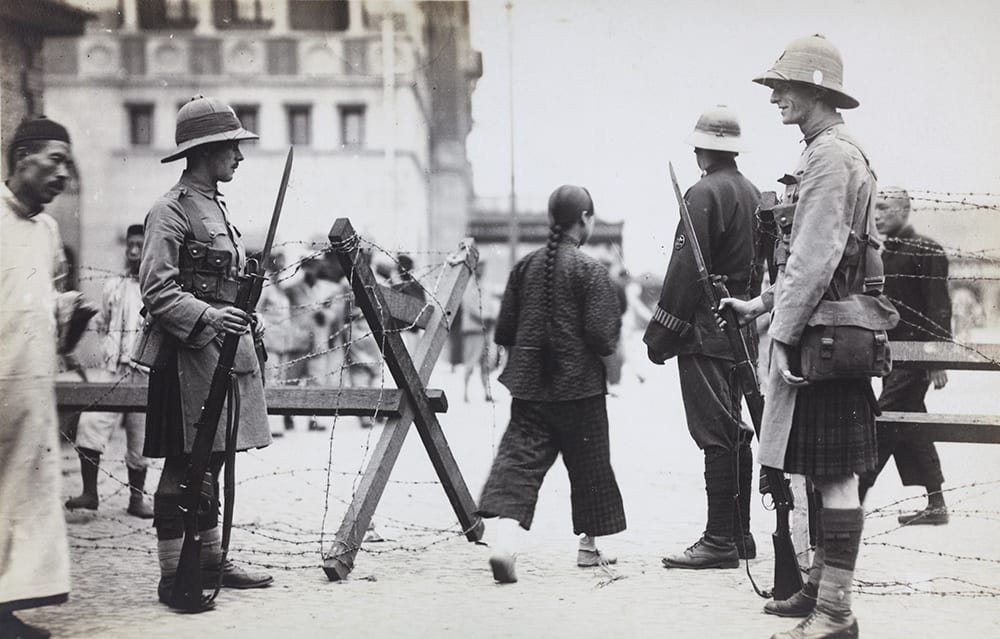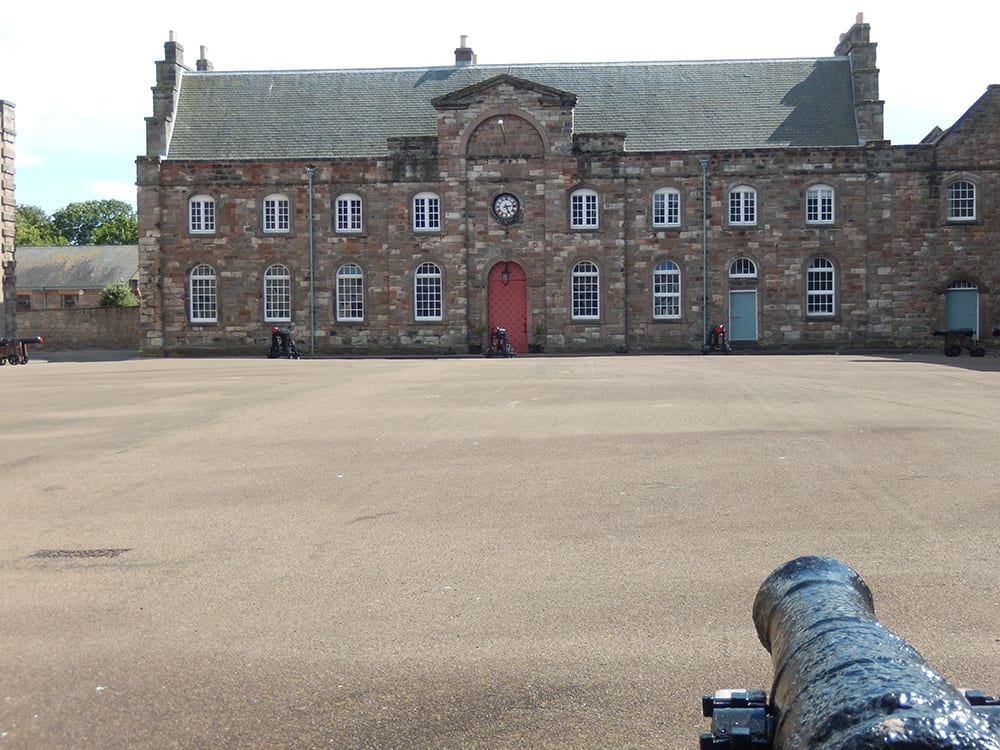Dr Andrew Hillier completes his introduction to The Regimental Museums Project by discussing some of the more nuanced aspects of military photography and the importance of regimental archives.
Aside from Felix Beato’s photographs of the Second Opium War, referred to in the first blog, and similarly brutal images surrounding the Boxer Uprising, photographs could often bring out the more complex aspects of Britain’s presence in China, for example, the fact that the 1st Chinese Regiment comprised, as rank and file, mainly Chinese subjects, who were required to fight against their fellow countrymen, under the command of British officers. [1]

New recruits to the 1st Chinese Regiment learn drill, 1900. Courtesy of the National Army Museum, NAM. 1983-05-42-4. From an album of 52 photographs taken and compiled by Captain C.D. Bruce (West Riding Regiment), acting Major (1st Battalion Chinese Regiment). © National Army Museum.
Photographs also show how, outside the combat zone, the military could also be engaged on a range of civilian tasks, albeit these would generally have an underlying strategic purpose. The Royal Engineers, for example, in the aftermath of the Uprising, took part in an extensive programme, rebuilding the infrastructure destroyed during the conflict, including bridges, railways and railway stations and, for a time, running the railway between Peking and Shan-hai-kwan (Shanhaiguan).) Whilst this was to ensure troops could be speedily deployed, it was also to protect the interests of British bondholders in the Tianjin-Mukden railway.

This improvised locomotive was the product of the Royal Engineers No 4. Company of the Bengal Sappers and Miners, under Captain H.R. Stockley. The engine, named ‘Grasshopper’, had been cobbled together under the supervision of Sergeant A. Tinkham, who was engaged in the reconstruction of Boxer-destroyed railway tracks in and around Fengtai, Peking (Beijing) in 1900. HPC ref NA06-16: a photograph from an album (WO 28/302. China. Boxer Rebellion) in The National Archives. Crown copyright image reproduced by permission of The National Archives, London, England.
Later, as Britain sought to reduce its imperial role and civil war in China intensified in the 1920s, , so government policy wavered between maintaining neutrality and using military force if that was seen as necessary to protect British interests.

Shanghai Volunteer Corps at a street barricade. HPC ref AL-s12. Comprising a multi-national militia under the control of British soldiers, the SVC, which was mobilised, for this emergency, in September 1924, included a Chinese company.
![Scots Guards & Shanghai Scottish Pipers, HPC ref AL-s04. The Scots Guards arrived in Shanghai on 2 July 1928 and were based there until 20 January 1929 as part of the British Shanghai Defence Force which was established in January 1927 following an attack on the British concession in Hankow (Hankou) and the surrender of the concession.[2] Note the Chinese on-lookers for whom this was not only a routine ceremonial but, in the highly-charged circumstances of the time, a powerful demonstration of British military capacity.](https://hpchina.blogs.bristol.ac.uk/files/2018/11/AL-s04-25q9825.jpg)
Scots Guards & Shanghai Scottish Pipers, HPC ref AL-s04. The Scots Guards arrived in Shanghai on 2 July 1928 and were based there until 20 January 1929 as part of the British Shanghai Defence Force which was despatched in late 1926 when the National Revolutionary Army of the Guomindang occupied central China during the Nationalist revolution.[2] Note the Chinese on-lookers for whom this was not only a routine ceremonial but, in the highly-charged circumstances of the time, a powerful demonstration of British military capacity.

Acrobatic display by Somerset Light Infantry soldiers, c. 1913. HPC ref JC-s056. The sort of photograph that soldiers will have sent in letters home.
Whilst the camera’s ‘imperial gaze’ was not always welcome for those being photographed, many images reflect a lively curiosity and show how photographs could articulate a new form of cultural understanding. Enclosed in letters home, they would also be a way of maintaining contact with family and friends as well as importing the experiences into the regimental record.
Photographs thus form a particularly important part of regimental archives, reflecting, as they do, not only the history of the regiment but also the careers of individual soldiers serving far from home. Similar material can also be found in public collections such as the British Library, the National Archives, the National Army Museum and the Royal Geographical Society. However, whilst those archives are secure, the future of regimental archives is more uncertain, not least because many regiments have been disbanded or merged and are having difficulty finding an identity in post-imperial and post-Cold War Britain. Whilst some collections are housed in buildings which form part of the regimental history, others are struggling to find a home or have already become incorporated in the local county archives and thus, although in safe hands, have lost that important local connection.

The former barracks of the King’s Own Scottish Borderers, Berwick-upon-Tweed. Managed by English Heritage, the buildings house an excellent military museum and the regiment’s archives, which include an important collection of photographs recording its assignment in China (mainly, Shamian, Canton (Guangzhou)) in the late 1920s. Photograph by Andrew Hillier, 2018.
As with other artefacts, such as plunder and loot, issues arise as to how these photographs should be displayed, given the problematic nature of Britain’s imperial history. That debate can only take place if there is proper access to the material and understanding of the surrounding events and this is where the regimental museums have a vital role to play, precisely because of the close connection between the regiment and the events in question.
The aim of the Regimental Museums Project, therefore, is to use these collections to examine the British military presence in China and how the serving soldier interacted with the Chinese people and his surroundings. Since the military would often explore locations seldom visited by westerners, for example, for intelligence and route-mapping purposes, whilst soldiers would embark on ambitious expeditions during their leave, there can be found within museum collections a wider set of images of the country. Wherever possible, the focus will be on individuals who, whether as part of their official duties, or simply from personal interest, recorded that presence, frequently adding comments and annotations. Chance has largely dictated how these photographs, whether neatly pasted into albums or hurriedly stuffed into envelopes, have found their way into museums, and often their origins are unknown or cannot be disclosed for reasons of confidentiality. The project will, therefore, be in the nature of work in progress and will not follow any particular thematic or chronological path. Hopefully, it will raise the profile of these collections and stimulate discussion in the context of Sino–British relations and history more generally. It may also encourage readers to rummage through trunks in attics in search of mementoes of their military forbears in China.
[1] The 1st Chinese Regiment will be the subject of the next blog.
[2] Robert Bickers, Out of China: How the Chinese Ended the Era of Western Domination (London: Allen Lane, 2017), p. 64.
